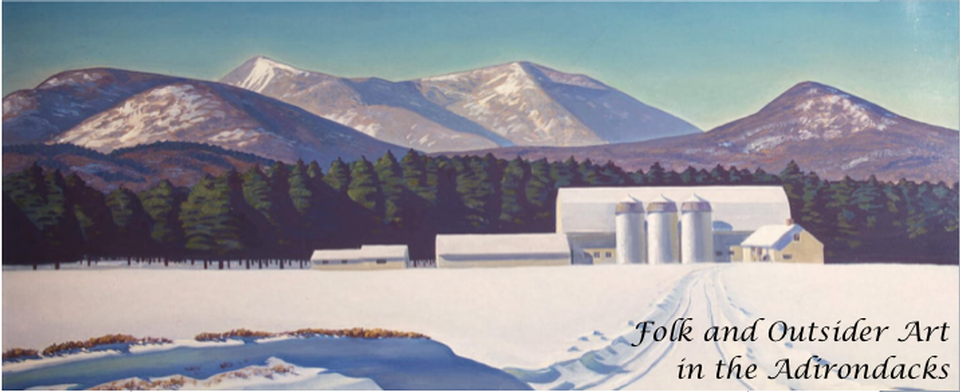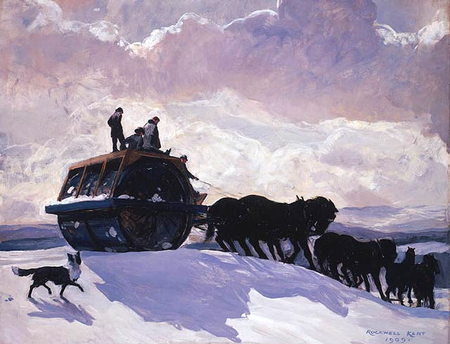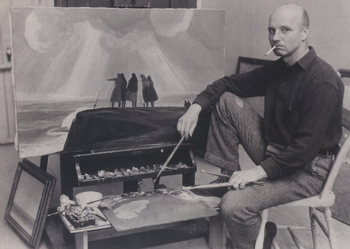Rockwell Kent
"And there, westward and heavenward, to the high ridge of Whiteface, northward to the northern limit of the mountains, southward to their highest peaks, was spread the full half-circle panorama of the Adirondacks. It was as if we had never seen the mountains before."
-This Is My Own, Rockwell Kent, from the History of Asgaard Farms
Rockwell Kent began his studies at the Horace Mann School in New York City, however, he began his study of art at the William Merritt Chase Summer School of Art at Shinnecock, Long Island. This was followed by some time at Columbia University studying architecture. Kent never graduated from Columbia, as before he entered his senior year, he dropped out and enrolled in the New York School of Art, under mentor Robert Henri. In 1905, Kent took a painting trip to Monhegan Island, ME, following in the footsteps of his mentor. Kent was so inspired by the working class attitude and art community that he bought a tract of land and lived there for several years. In 1911, he moved back to New York and continued working as an architectural draftsman.
Kent could be described as an American symbolist. His works mirrored those done by symbolists and some German expressionists and often included bold lines and imagery (Sullivan Goss Gallery). The style of Symbolism was a predecessor to Surrealism and was prominent in European art in the late 19th century and early 20th century. Symbolists gravitated towards dreams, fantasies, and visions rather than realism for their sibject matter (New York Times Art). Symbolists valued imagination over knowledge. According to an article published by the New York Times, "His work can be seen for what it is, at its best, an expertly staged and orchestrated realism that is still vibrant." His work is a departure from traditional landscape paintings in both style and content: signs of humans (including actual humans) appear frequently in his artwork.
In Kent's painting, "The Road Roller," he used fluid brush strokes and thick impasto – a technique used in painting where paint is laid on the surface thick enough to see brush or palette-knife strokes. His works also often portrayed bleak and rugged aspects of nature including how humans fit into wilderness. In this case, the Road Roller is working against nature, and the snowing and stormy setting create a bleak tone.
Rockwell Kent reinforced his status as an outsider when he said "Art must unquestionably have a social value; that is, as a potential means of communication it must be addressed, and in comprehensible terms, to the understanding of mankind." This divides him from folk artists because folk artists usually create their art for themselves, or are organically inspired by their experiences. Kent thinks art is valuable because it can carry intentional meanings. Art as a means of societal commentary is one of the reasons it can be so powerful, but Kent's symbolic paintings are clearly departures from experiential folk art.



